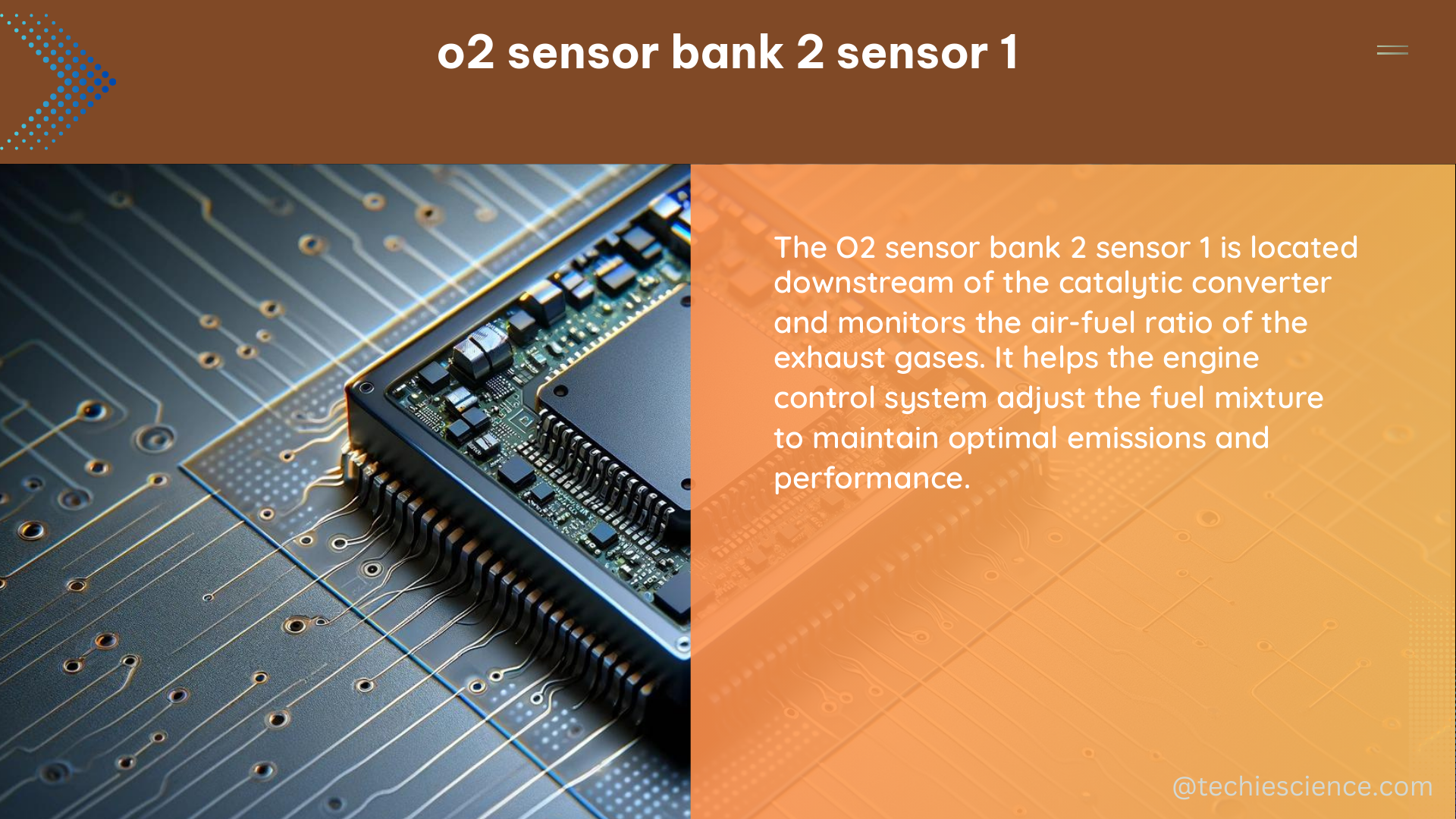The oxygen sensor, also known as the O2 sensor, is a critical component in modern vehicles that measures the amount of oxygen in the exhaust gases. It is used by the engine control unit (ECU) to adjust the air-fuel mixture to maintain optimal combustion and reduce emissions. The O2 sensor is typically located in the exhaust manifold or close to the catalytic converter.
Understanding O2 Sensor Types
There are two types of O2 sensors: upstream and downstream. The upstream sensor, also known as the pre-cat sensor, is located before the catalytic converter and measures the oxygen content of the exhaust gases before they enter the converter. The downstream sensor, also known as the post-cat sensor, is located after the catalytic converter and measures the oxygen content of the exhaust gases after they have passed through the converter.
The O2 sensor bank 2 sensor 1 refers to the upstream O2 sensor on the side of the engine that contains cylinder number 2. This sensor is responsible for measuring the oxygen content of the exhaust gases before they enter the catalytic converter on that side of the engine.
Technical Specifications of O2 Sensor Bank 2 Sensor 1

The technical specifications of the O2 sensor bank 2 sensor 1 can vary depending on the make and model of the vehicle. However, most O2 sensors have the following specifications:
| Specification | Range |
|---|---|
| Voltage Output | 0 to 1 volt |
| Target Voltage (Stoichiometric Air-Fuel Ratio) | ~0.45 volts |
| Heater Element Resistance | 10 to 20 ohms |
The sensor also has a heater element that helps it reach operating temperature quickly, with a resistance range of 10 to 20 ohms.
Testing the O2 Sensor Bank 2 Sensor 1
To test the O2 sensor bank 2 sensor 1, you can use a multimeter to measure the voltage output of the sensor. A properly functioning O2 sensor should switch between a low voltage (around 0.1 volts) and a high voltage (around 0.9 volts) several times per second. This switching pattern indicates that the sensor is responding to changes in the oxygen content of the exhaust gases.
If the sensor is not switching or is stuck at a high or low voltage, it may be faulty and require replacement. You can also use an OBD2 scanner to read any diagnostic trouble codes (DTCs) related to the O2 sensor bank 2 sensor 1, which can provide more information about the sensor’s condition.
Replacing the O2 Sensor Bank 2 Sensor 1
To replace the O2 sensor bank 2 sensor 1, you will need to locate the sensor on the exhaust manifold or close to the catalytic converter. You will then need to remove the sensor using a special oxygen sensor socket, which is typically a 7/8-inch or 22mm socket.
When installing the new sensor, it is important to follow the manufacturer’s instructions carefully. This may include ensuring that the sensor is properly tightened (typically to a torque specification of 40-60 Nm or 30-45 ft-lbs) and that the wiring is properly connected.
After replacing the O2 sensor bank 2 sensor 1, it is a good idea to clear any diagnostic trouble codes (DTCs) that may have been set and to perform a test drive to ensure that the new sensor is functioning properly.
Conclusion
The O2 sensor bank 2 sensor 1 is a critical component in modern vehicles that plays a crucial role in maintaining optimal engine performance and reducing emissions. By understanding the technical specifications, testing procedures, and replacement process for this sensor, you can ensure that your vehicle’s engine is running at its best.
References:
- Interpreting O2 sensor readings using an OBD2 scanner: https://www.porscheclubgb.com/forum/threads/interpreting-o2-sensor-readings-using-an-obd2-scanner.156565/
- Using O2 Sensor Data in Diagnostics – YouTube: https://www.youtube.com/watch?v=pCEWdCaFvLg
- Understanding Oxygen Sensors to Diagnose Fault Codes: https://www.motortrend.com/how-to/1501-understanding-oxygen-sensors-to-diagnose-fault-codes/

The lambdageeks.com Core SME Team is a group of experienced subject matter experts from diverse scientific and technical fields including Physics, Chemistry, Technology,Electronics & Electrical Engineering, Automotive, Mechanical Engineering. Our team collaborates to create high-quality, well-researched articles on a wide range of science and technology topics for the lambdageeks.com website.
All Our Senior SME are having more than 7 Years of experience in the respective fields . They are either Working Industry Professionals or assocaited With different Universities. Refer Our Authors Page to get to know About our Core SMEs.